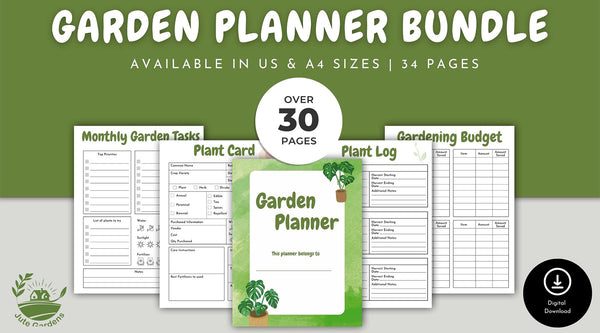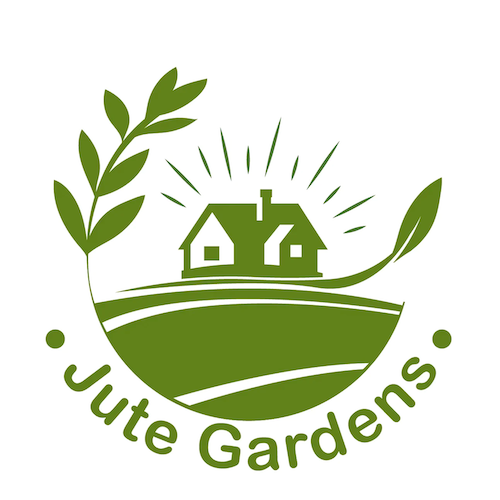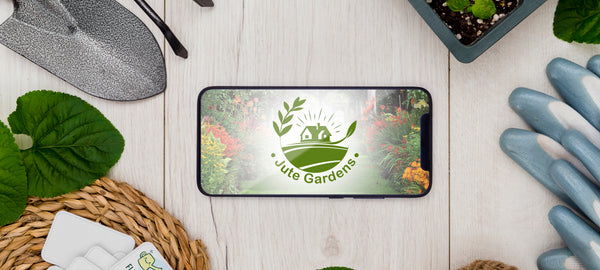
Mastering Garden Planning: Tips and Tricks
Gardening is a rewarding and fulfilling hobby, but it can also be challenging and time-consuming. One of the keys to success in gardening is proper planning. By taking the time to plan your garden, you can ensure that you have the right tools, supplies, and knowledge to create a beautiful and bountiful outdoor space.
Learn how to plan your garden like a pro with our comprehensive guide. Discover the best tools, techniques, and strategies for a beautiful, bountiful garden all year round.
Click here for more.

Layout and Design
Before you begin gardening, it's important to consider the layout and design of your garden. The first step in gardening planning is to choose a location for your garden. This should be a sunny spot with well-draining soil and easy access to water. Next, you'll want to decide on the size and shape of your garden. This will depend on the size of your outdoor space and the amount of time you have to devote to gardening.
Research Plants
Once you've chosen a location and a size for your garden, it's time to start thinking about the plants you'll be growing. This is where your gardening planning really comes into play. You'll need to research the different types of plants that will thrive in your area. Then select those that will work well in your garden. You'll also want to consider the amount of sun, shade, and moisture that your plants will need. Then consider their growth habits and mature size.
Garden Maintenance
Another important aspect of gardening planning is garden maintenance. This includes tasks such as A well-maintained garden and pest control. A garden that is well-maintained will be healthier, more productive, and more beautiful. To make your gardening planning process easier and more efficient, you can use tools such as gardening journals, calendars, and software. These tools will help you keep track of important dates. You will know when to plant and when to harvest, as well as when to fertilize and when to prune.
Seed Inventory
Taking inventory of your seeds helps you to keep track of what seeds you have on hand and what you may need to purchase.
- By keeping an inventory of your seeds, you can ensure that you have enough seeds to plant your desired garden. You can then plan accordingly.
- It allows you to organize your seeds according to variety, quantity, and expiration date. This way, you will know which seeds are still viable and which ones need to be replaced before planting.
- It helps you to plan for the next growing season. By keeping track of what seeds you have and what you need, you can plan your garden for the next season.
- It allows you to take advantage of seed sales, discounts and offers from seed companies. With an inventory of your seeds, you can see what you need and what you have. You can make informed decisions about which seeds to purchase when seed sales or discounts are offered.
Fertilizer Inventory
Taking inventory of your fertilizer is an important aspect of gardening planning for several reasons.
- It helps you to keep track of what fertilizers you have on hand and what you may need to purchase. You can ensure that you have the right types and enough fertilizer to properly nourish your plants throughout the growing season.
- It allows you to plan for the next growing season. You can keep track of what you have and what you need. You can plan your garden for the next season and make sure you have the necessary fertilizers on hand.
- It helps to prevent the overuse or underuse of fertilizer. Having an inventory of your fertilizer allows you to know the amount you have. You can adjust accordingly to avoid overuse or underuse of fertilizer. Overuse of fertilizer can be harmful to plants, while underuse may not provide the needed nutrients.
- It helps you to take advantage of fertilizer sales, discounts, and offers. With an inventory of your fertilizer, you can see what you need and what you have. You can make informed decisions about which fertilizers to purchase based on when fertilizer sales or discounts are offered.

Plant Wish list
Creating a wish list of plants for your garden is an important aspect of gardening planning for several reasons.
- It helps you to plan for the next growing season. You can research and select the plants that will thrive in your specific gardening conditions, such as sunlight, soil type, and climate.
- It allows you to choose plants that will complement each other in terms of appearance and growth habits. You can choose plants that will work well together and create a cohesive and visually pleasing garden.
- It helps you to stay within budget. You can prioritize the plants you want to purchase and purchase only what you can afford.
- It allows you to take advantage of plant sales, discounts and offers. With a wish list of plants, you can see what you want and what you have, and make informed decisions about which plants to purchase when plant sales or discounts are offered.
Monthly Harvest Calendar
A monthly harvest calendar is a tool that helps gardeners keep track of when their plants will be ready to harvest. It typically includes information such as the name of the plant, the planting date, and the expected harvest date.
Having a monthly harvest calendar can be beneficial for several reasons:
- It helps you to plan your gardening efforts more effectively. You can plan your planting and harvesting schedule to ensure that you have a steady supply of fresh produce throughout the growing season.
- It allows you to take advantage of peak ripeness. You can ensure that you're harvesting them at the peak of ripeness when they are at their most flavorful and nutritious.
- It helps you to keep track of crop rotation. By noting the plants that you've harvested and when, you can ensure that you're rotating your crops to prevent disease, pests, and nutrient depletion.
- It can help you to identify patterns in your garden. You can identify patterns in your gardening efforts and make adjustments as needed.
- It helps you to plan for the next season. By keeping track of what you've harvested and when, you can plan for the next gardening season, and make adjustments to your planting schedule to ensure that you're getting the most out of your garden.
Keeping Track of Seed Purchases
Keeping track of your seed purchases helps you to identify which seeds are the most reliable and productive. By keeping track of which seeds you've purchased and where they came from, you can identify which seed sources have the best germination rates and which plants are the most productive in your garden.
- It allows you to plan your seed purchases more effectively. You can plan your seed purchasing schedule to ensure that you have enough seeds to plant throughout the growing season.
- It can help you to avoid seed fraud. You can ensure that you're buying seeds from reputable sources and avoid purchasing counterfeit or low-quality seeds.
- It helps you to identify seed storage conditions. You can identify which storage conditions are the most suitable for your seed, and ensure that your seed is stored properly.
- It can help you to save money. You can identify which seeds are the most cost-effective and which seed sources offer the best prices.
Pest Control Log
Keeping a log of your pest control activities in your garden is important for several reasons:
- It helps you to identify patterns and trends in pest activity. You can identify patterns and trends in pest activity, which can help you to anticipate future outbreaks and take preventive measures.
- It allows you to evaluate the effectiveness of your pest control methods. You can track the effectiveness of different pest control methods and identify which methods are most effective for controlling specific pests.
- It helps you to comply with regulations. Many states and municipalities have regulations regarding the use of pesticides and other pest control methods. Keeping a log of your pest control activities can help you to comply with these regulations.
- It can help you to save money. You can identify which methods are most cost-effective and which products are the most cost-efficient.
- It can help you to plan for future pest control. By keeping track of which pests have been a problem in the past, and when they have been a problem, you can plan your pest control activities more effectively in the future.
Watering Schedule
Keeping a watering schedule for your garden is important for several reasons:
- It ensures proper hydration for your plants. Different plants have different water requirements, and keeping a watering schedule ensures that each plant gets the appropriate amount of water.
- It helps to prevent over-watering which can lead to waterlogged soil and root rot, which can damage or kill plants. Keeping a watering schedule ensures that your plants are not getting too much water.
- It helps to conserve water. You can identify areas where water is being wasted and make adjustments to conserve water.
- It helps to plan for future watering needs. You can plan for future watering needs and make sure that your garden is well-watered during dry periods.
- It can save you time. You can make sure that your plants are well-watered without having to spend too much time checking on them.
Seed Starting Log
Keeping a log of when you started your seeds in your garden is important for several reasons:
- It helps you to track germination rates. You can track how long it took for them to germinate, which can help you identify any issues seed-starting starting process.
- It helps you to plan for future plantings. You can plan for future plantings and make sure that your seedlings are ready for transplanting at the appropriate time.
- It helps you to track seed viability. You can track how long they remain viable, and make sure you are using fresh seeds when planting.
- It helps you to identify patterns in seed germination. By keeping track of when you started your seeds, you can identify patterns in germination, such as which seeds germinate best at different times of the year, which can help you plan your gardening activities more effectively.
- It can help you to save money. You can identify patterns in seed germination and use this information to plan your future seed purchases, which can help you save money.
- It can help you to have a better crop. By keeping a log of when you started your seeds, you can plan your future seed purchases, and plant your seeds at the right time, which can help you to have a better crop.
Garden Layout
Planning your garden ahead of time with a layout diagram is important for several reasons:
- It allows you to visualize the overall design of your garden. You can see how different plants will fit together and how they will look in the finished garden.
- It helps you to optimize space. By planning your garden ahead of time with a layout diagram, you can make sure that you are using your available space in the most efficient way possible.
- It helps you to plan for different seasons. You can plan for different seasons and make sure that your garden will have visual interest throughout the year.
- It helps you to plan for different lighting conditions. You can make sure that you are placing plants in the areas of the garden that receive the right amount of light.
- It helps you to plan for different soil types. You can plan for different soil types and make sure that you are placing plants in the areas of the garden that have the right soil conditions.
- It helps you to plan for different water requirements. You can make sure that you are placing plants in the areas of the garden that have the right water requirements.
- It helps you to plan for pests and diseases. You can plan for pests and diseases, and make sure that you are placing plants in the areas of the garden that are less susceptible to these issues.
Seasonal Tasks
Recording seasonal tasks concerning your garden are important for several reasons:
- It helps you to stay organized. You can ensure that you are on top of all the necessary tasks for your garden throughout the year.
- It helps you to stay ahead of the growing season. You can plan and make sure that you are prepared for each season's specific needs.
- It helps you to make the most of your garden. You can ensure that you are taking full advantage of each season's unique opportunities, such as planting at the right time, harvesting at the peak of ripeness, and so on.
- It helps you to keep track of your progress. You can keep track of your progress and see how your garden is evolving.
- It helps you to identify patterns. By recording seasonal tasks, you can identify patterns in your garden such as pests and diseases that appear every year, or which plants thrive or struggle during different seasons.
- It helps you to plan for future seasons. You can plan for future seasons and make sure that you are prepared for what's to come.
- It helps you to avoid mistakes. By recording seasonal tasks, you can avoid mistakes such as forgetting to plant or harvest at the right time or neglecting important maintenance tasks.
Conclusion
Mastering garden planning is a key to success in gardening. With proper planning, you can ensure that you have the right tools, supplies, and knowledge to create a beautiful and bountiful outdoor space.
Take the time to research the different types of plants that will thrive in your area, consider the amount of sun, shade, and moisture that your plants will need, as well as their growth habits and mature size. Invest in high-quality, durable tools and purchase all your gardening supplies online from a reputable supplier. And remember to enjoy the process of creating a beautiful and bountiful outdoor space.
Shop Garden Planner Bundle Now

